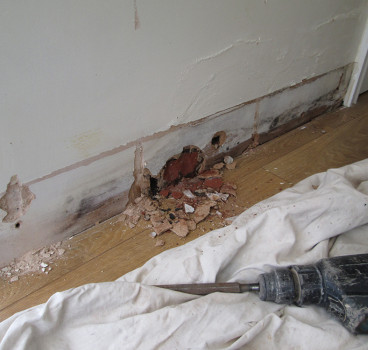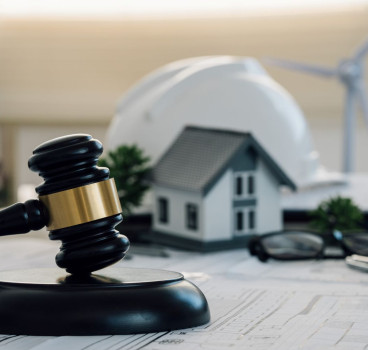Designing for Disasters -Innovations in Hurricane and Seismic-Resistant Construction
The global population is on the rise. Natural disasters are also becoming more common, forcing people to buy or build in disaster-prone areas. If you act proactively, you can help ensure their safety for decades to come — and potentially transform the construction industry in the process. You should take inspiration from innovations in hurricane and seismic-resistant construction.
The Importance of Designing for Disasters
Think back to Hurricane Katrina. It is among the worst natural disasters in the country’s history, with nearly 1,400 confirmed deaths and $125 billion in property damage. However, the storm wasn’t responsible for the worst floodwaters — infrastructure was. The Army Corps of Engineers admitted faulty design specifications caused 65% of the flooding.
As an industry professional, you are likely all too familiar with the dangers of shoddy construction. In the face of worsening hurricanes and seismic activity, the importance of the resilience-by-design concept cannot be overstated.
Natural disasters are becoming increasingly frequent and severe. As waters in the tropics warm, tropical storms are becoming increasingly intense. Property and casualty insurance companies are pulling out of disaster-prone areas at an alarming rate. In Florida, nine insurers declared insolvency from 2021 to 2023 alone, prompting others to leave the state voluntarily.
Homeowners left without insurance are unlikely to rebuild if their houses are destroyed. You may lose work as a result of the market gap they create. Even if people accept the risk of building in hurricane- or earthquake-prone areas, you must prioritize resilient construction methods to keep them out of harm’s way.
Adopting a Resilience-by-Design Approach
Adopting resilience-by-design strategies doesn’t necessarily mean you must overhaul your entire approach. Sometimes, time-tested techniques are far better than emerging alternatives. Take shielded metal arc welding (SMAW), for instance. It is one of the world’s oldest and most widely used welding processes for a reason.
SMAW is portable, cost-effective and versatile. It effectively produces strong welds, even in challenging environments like confined spaces or the outdoors. Moreover, it works with a broad range of metals, making it suitable for novel construction practices. Leveraging this proven process alongside new methods can increase buildings’ structural integrity and longevity.
Hurricane- and Seismic-Resistant Structures
Unlike tornadoes, wildfires and thunderstorms, hurricanes and earthquakes provide advanced warning, giving property owners time to prepare. Also, they are typically isolated to certain geographies, enabling you to develop location-specific building methods.
Consider designing around the natural landscape, using existing features for construction inspiration and resilience. The Battery Playscape in New York City — designed after Hurricane Sandy — did just this. It features salt-tolerant gardens, elevated playhouses and multilevel areas.
The concrete slides, sloping architecture and shallow vegetated depressions capture rainwater to hydrate plants and prevent flooding. The nearby reservoir holds 30,000 gallons of stormwater, preventing overflow.
Making something flood- and quake-proof is possible, as the Bundanon Art Museum and Bridge in Australia demonstrated with a subterranean museum that keeps floodwaters out and is resilient to seismic activity. The bridge is built above the 100-year flood line. If floodwaters arrive, it impedes surface runoff while allowing heavy flows to move unimpeded.
Creative Resilient Construction Techniques
You can’t change the amount of rainfall or move earthquake faults — you can only prepare for their effects. While using durable materials and creative designs is helpful, you should consider going with the flow instead of fighting against it, so to speak. What if you built structures in harmony with the environment?
The floating community of Schoonschip in Amsterdam is a perfect example. In the Netherlands, land is scarce, but the population density is high — its residents are all but forced to live in flood-prone areas. Hundreds have moved into prefabricated floating homes built on the water and fixed to the shore, revitalizing previously neglected neighborhoods.
Instead of a basement, the houses have concrete hulls that act as counterweights and keep them afloat. It solves the issue of land scarcity while protecting them from rain-induced flooding. You could reimagine this innovative construction method by putting it to use in hurricane and earthquake-prone areas.
Future-Proofing the Construction Industry
Resilience-by-design is one of the best ways to future-proof buildings against severe weather events and natural disasters. Whether you build new homes or retrofit existing ones, you can take inspiration from these innovative techniques. The more structures you future-proof, the less damage hurricanes and earthquakes will do.
Additional Blogs

How construction can cut Its carbon footprint by caring for soil
Soil is often dismissed as mere dirt, but it is one of the planet’s most powerful carbon stores, holding more than all of the world’s forests combined. Yet in our rush to build, pave and develop, we...
Read moreWhat is bridging damp? How it happens and how to fix it
Bridging damp happens when moisture finds a path around the building’s damp-proof course (DPC) so it reaches your internal walls and skirting. If you see damp patches rising above the skirting or...
Read more

The silent death of the fixed-price contract
For decades, the fixed-price contract has been the backbone of construction procurement. It promised certainty with a defined scope, an agreed sum and a clear transfer of risk from client to...
Read more